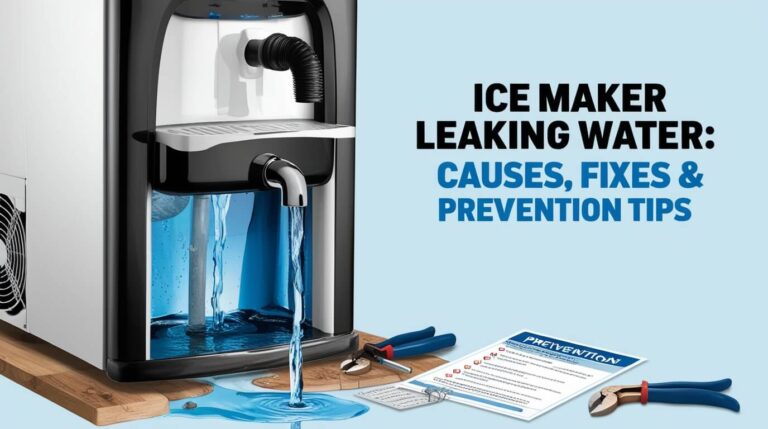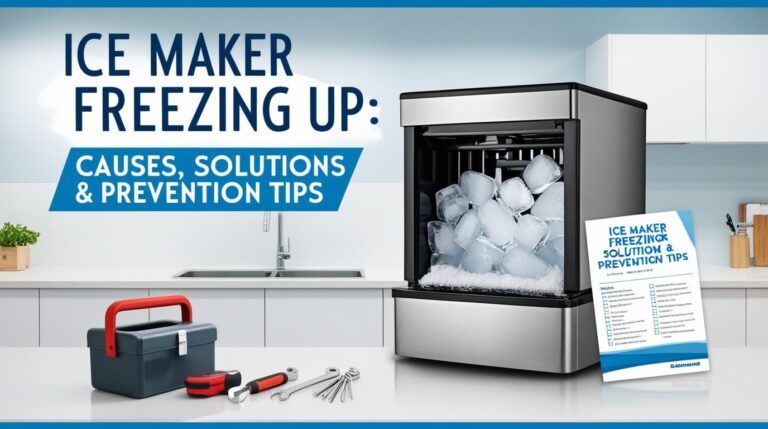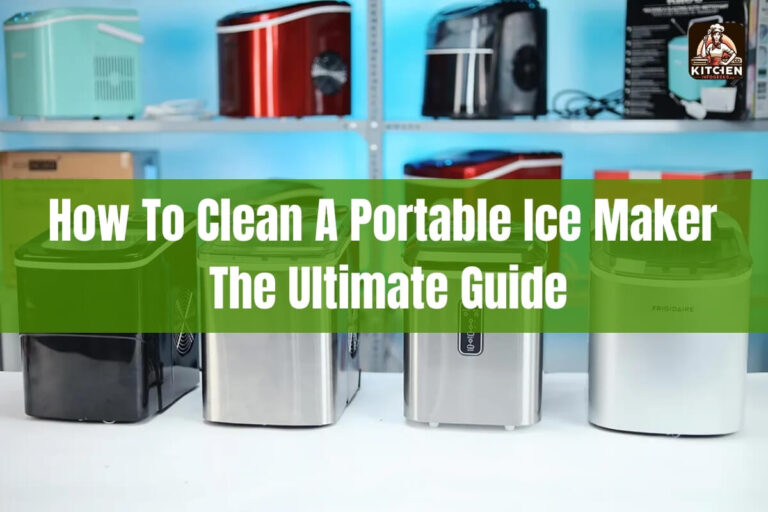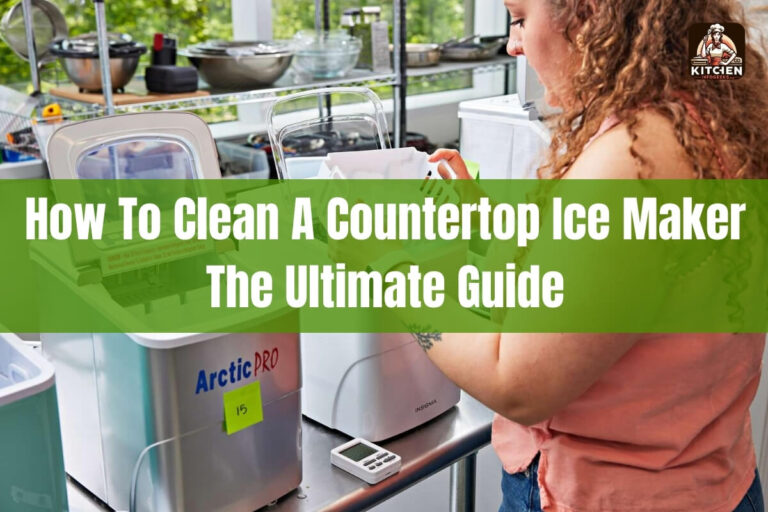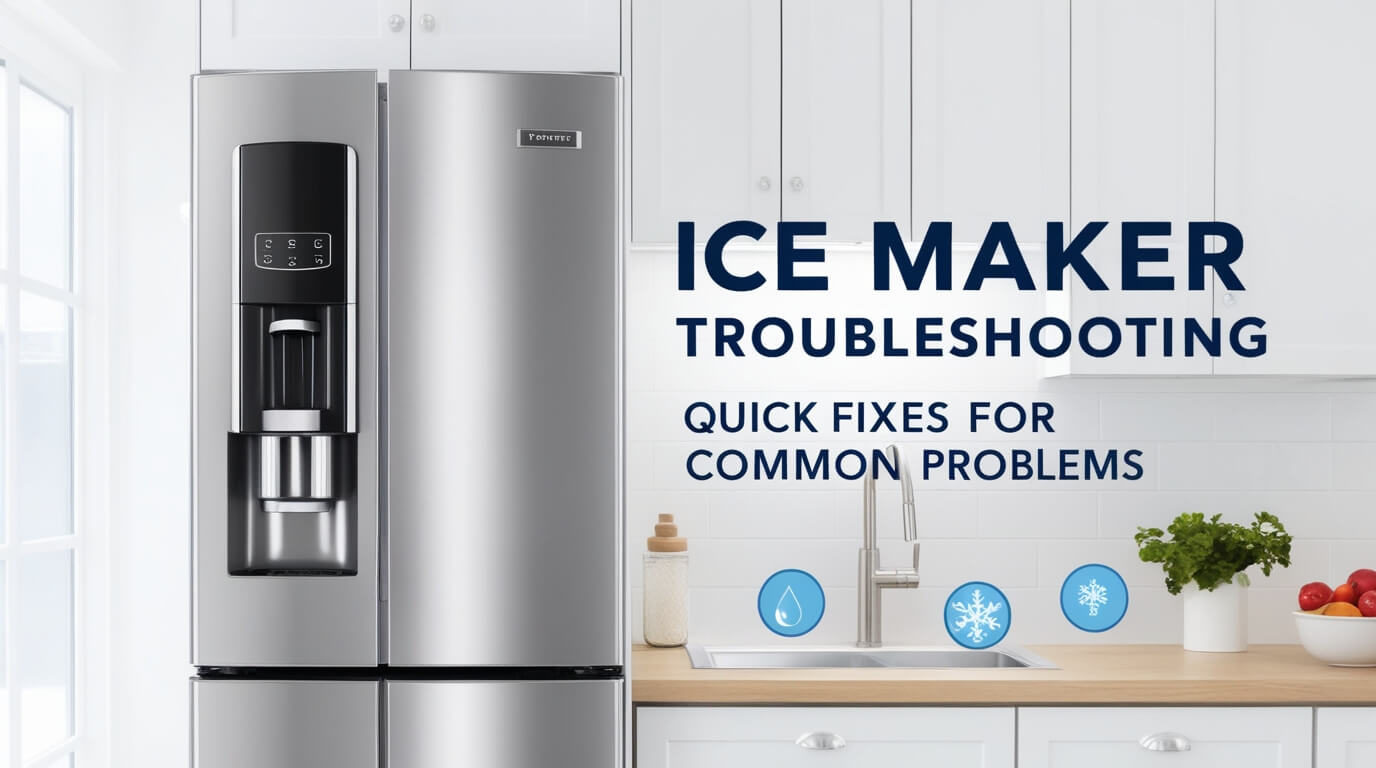
Is your ice maker on the fritz? Don’t sweat it. Many people face ice maker troubles, and you can often fix them yourself. This guide gives you the know-how to get your ice maker working again.
We’ll cover how ice makers work, common problems, and easy fixes. You’ll soon be back to enjoying cold drinks with plenty of ice.
Ice Maker
Before we start fixing, let’s get to know your ice maker a little better. This knowledge will help you troubleshoot more effectively.
Types of Ice Makers
Ice makers come in various shapes and sizes. The most common types are:
- Built-in refrigerator ice makers
- Standalone countertop ice makers
- Under-counter ice makers
- Commercial ice machines
Each type has its quirks, but they all follow similar principles. For this guide, we’ll focus mainly on built-in refrigerator ice makers, as they’re the most common in homes.
How Ice Makers Work
Ice makers might seem magical, but they’re actually pretty straightforward. Here’s a quick rundown:
- Water flows into the ice maker through a valve.
- The water fills ice molds.
- A freezing cycle begins, turning the water into ice.
- Once frozen, a heating cycle loosens the ice.
- An ejector arm pushes the ice cubes out.
- The ice falls into a collection bin.
- A sensor detects when the bin is full and stops production.
Understanding this process helps pinpoint where things might go wrong. Now, let’s look at some common ice maker problems.
Common Ice Maker Problems
No Ice Production
You open the freezer, reach for some ice, and… nothing. An ice maker that’s not producing any ice is frustrating, but often fixable. Common causes include:
- Power issues
- Water supply problems
- Clogged water lines
- Faulty water inlet valve
- Broken ice maker assembly
We’ll cover how to check each of these in our troubleshooting section.
Slow Ice Production
Is your ice maker working, but at a snail’s pace? Slow ice production can be caused by:
- Low freezer temperature
- Dirty water filter
- Partially blocked water line
- Faulty water inlet valve
A properly functioning ice maker should produce a batch of ice every 1-2 hours. If yours is taking longer, it’s time to investigate.
Small or Misshapen Ice Cubes
Tiny ice cubes or weird shapes? This usually points to water flow problems. Possible culprits include:
- Low water pressure
- Partially clogged water filter
- Mineral buildup in the ice maker
These issues can usually be resolved with some cleaning and filter changes.
Ice Maker Won’t Stop Producing Ice
An overflowing ice bin isn’t just messy – it can damage your freezer. If your ice maker won’t quit, check:
- The shut-off arm or sensor
- The control board
- The water inlet valve (it might be stuck open)
Strange Taste or Odor in Ice
Funky-tasting ice can ruin a good drink. If your ice tastes off, consider:
- Old ice absorbing freezer odors
- A dirty water filter
- Contaminated water supply
- Mold or mildew in the ice maker or bin
Regular cleaning and timely filter changes can prevent most taste issues.
Step-by-Step Ice Maker Troubleshooting
Now that we’ve covered common problems, let’s walk through some troubleshooting steps. Remember, safety first – always unplug your refrigerator before poking around inside.
Check the Power Supply
It sounds obvious, but make sure your ice maker is getting power:
- Check if the ice maker switch is in the “on” position.
- Ensure the refrigerator is plugged in and the outlet works.
- Look for any tripped circuit breakers.
Inspect the Water Supply
No water means no ice. Here’s how to check:
- Make sure the water valve behind the fridge is fully open.
- Check for kinks in the water line.
- If your fridge has a water dispenser, test it. If it’s not working, you likely have a water supply issue.
Examine the Water Filter
A clogged filter can slow or stop ice production:
- Locate your refrigerator’s water filter.
- If it’s been more than 6 months since you changed it, replace it.
- If you’ve recently changed the filter, make sure it’s installed correctly.
Clear Any Ice Jams
Sometimes, ice cubes can get stuck:
- Remove the ice bin and look for any jammed cubes.
- Clear out any ice buildup in the ejector arm.
- Check the chute for blockages if you have a door dispenser.
Test the Thermostat and Temperature Settings
Ice makers need the right temperature to function:
- Check your freezer’s temperature. It should be around 0°F (-18°C).
- If it’s too warm, adjust the thermostat.
- Wait 24 hours to see if ice production improves.
Advanced Troubleshooting Techniques
If the basic steps didn’t solve your problem, it’s time to dig a little deeper. These techniques require a bit more skill, so proceed with caution.
Checking the Water Inlet Valve
The water inlet valve controls water flow to your ice maker:
- Unplug the refrigerator and turn off the water supply.
- Locate the valve (usually behind the fridge or inside at the bottom).
- Check for any visible damage or mineral buildup.
- Use a multimeter to test for continuity. If there’s no continuity, the valve needs replacing.
Inspecting the Ice Maker Assembly
If the assembly is faulty, you might need to replace it:
- Remove the ice maker cover.
- Look for any visible damage or excessive frost buildup.
- Check that the ejector arm moves freely.
- If you spot any issues, consider replacing the entire assembly.
Examining the Control Module
The control module is the brain of your ice maker:
- Locate the module (refer to your manual for its position).
- Check for any signs of damage or corrosion.
- If you suspect a faulty module, it’s best to call a professional for testing and replacement.
Maintenance Tips to Prevent Ice Maker Issues
An ounce of prevention is worth a pound of cure. Here are some tips to keep your ice maker running smoothly:
Regular Cleaning Practices
Clean your ice maker every 3-6 months:
- Empty the ice bin and wash it with mild soap and warm water.
- Wipe down the interior of the ice maker with a solution of water and vinegar.
- Run a few cycles and discard the first few batches of ice after cleaning.
Proper Usage Guidelines
Treat your ice maker right:
- Don’t overfill the ice bin.
- Avoid storing non-food items in the freezer near the ice maker.
- Use the ice regularly to prevent clumping.
When to Replace Parts
Even with good maintenance, parts wear out:
- Replace the water filter every 6 months.
- Check the water line annually for wear and replace if necessary.
- Most ice makers last 3-10 years before needing replacement.
When to Call a Professional
While many ice maker issues can be DIY-ed, some require expert help.
Signs of Serious Problems
Call a pro if you notice:
- Unusual noises coming from the ice maker
- Water leaking inside the freezer
- Ice maker problems accompanied by other refrigerator issues
Choosing a Reliable Repair Service
When you need professional help:
- Look for licensed and insured technicians.
- Check online reviews and ask for recommendations.
- Get multiple quotes before deciding.
Conclusion
Ice maker troubleshooting doesn’t have to be a headache. With regular maintenance and prompt attention to issues, you can keep your ice maker running smoothly for years. Remember, many problems have simple solutions – a little patience and know-how can go a long way.
By following this guide, you’re well-equipped to tackle common ice maker issues. And when in doubt, don’t hesitate to call in the pros. Here’s to many years of perfectly chilled drinks!

